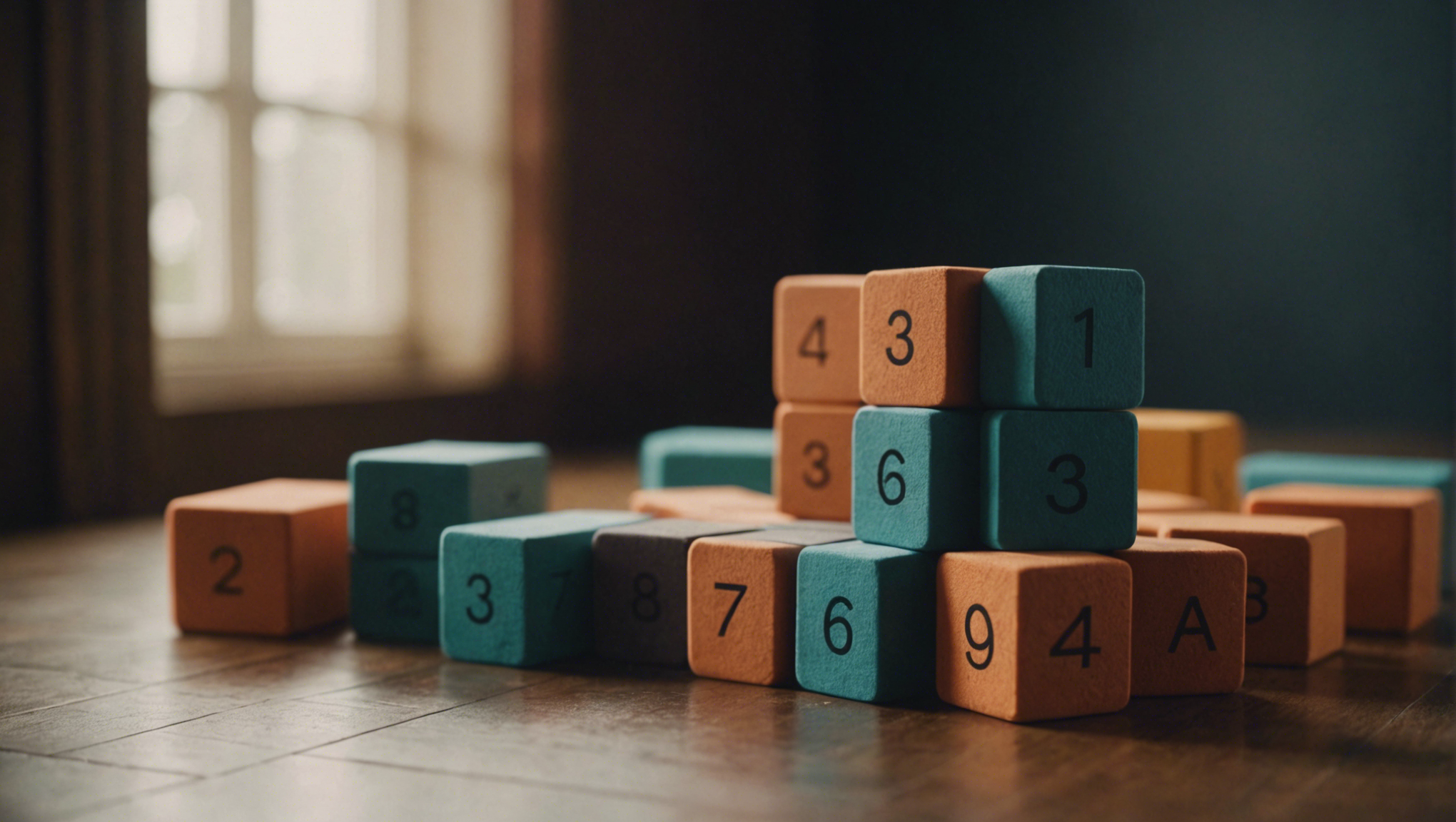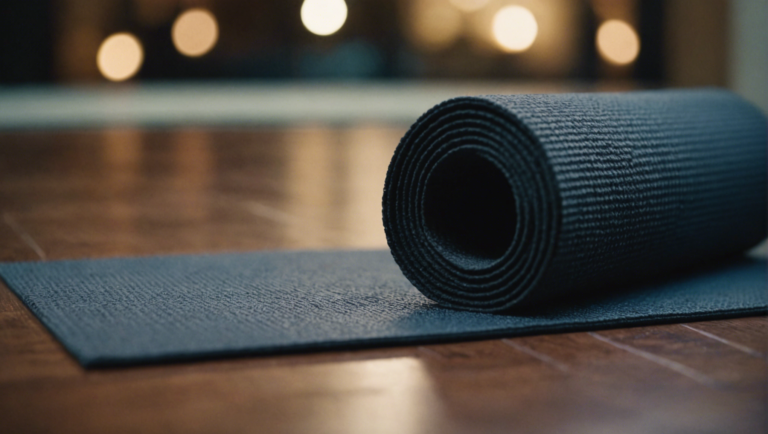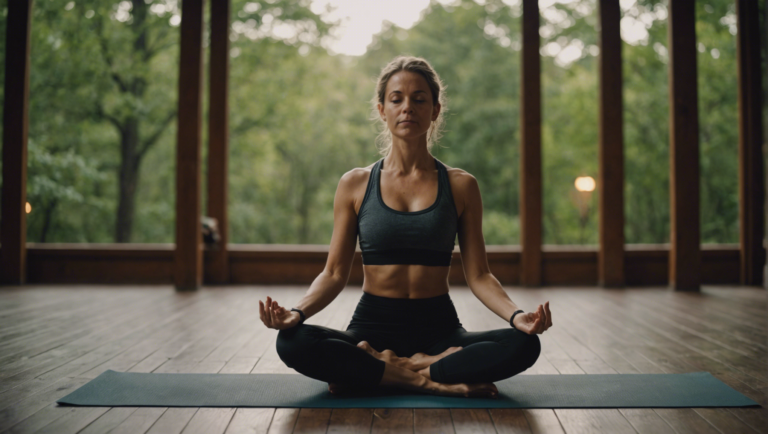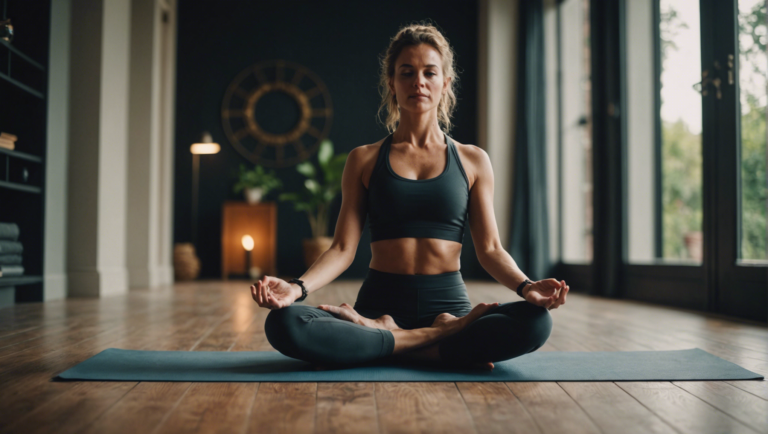Determining The Number Of Yoga Blocks You Need: A Comprehensive Guide
Determining the Number of Yoga Blocks You Need: A Comprehensive Guide
Yoga blocks are essential tools for practitioners at all levels, serving as props to support, align, and deepen stretches during practice. The decision on how many yoga blocks to incorporate into your practice depends on a variety of factors including personal flexibility, the style of yoga you practice, and the specific asanas you aim to improve or modify. This comprehensive guide aims to navigate you through the process of determining the optimal number of blocks for your personal practice, ensuring both safety and progression.
Understanding the Role of Yoga Blocks
Yoga blocks are more than mere props; they are extensions of your practice that foster improvement in form, prevent injury, and enhance your ability to engage with poses deeply. Made from materials like foam, cork, or bamboo, blocks vary in density, weight, and sustainability features, catering to different preferences and needs.
Assessing Your Yoga Practice Needs
The type of yoga you practice plays a significant role in how many blocks you might need. For example, Iyengar and Yin yoga, known for their static poses and deep stretches, often require more blocks for proper support and alignment. Conversely, in more dynamic practices like Vinyasa or Ashtanga, you might use fewer blocks, focusing on their use in specific poses rather than throughout the entire session.
Evaluating Personal Flexibility and Mobility
Personal flexibility and mobility greatly influence the number of yoga blocks that will benefit your practice. Beginners or individuals with limited flexibility might find multiple blocks useful in making poses more accessible. For instance, placing a block under each hand in poses like Triangle Pose can help maintain proper alignment until flexibility improves. As your flexibility increases, you may find that you need fewer blocks or use them differently to deepen poses rather than make them accessible.
Multiple Uses Across Different Asanas
Yoga blocks can serve multiple purposes across different asanas, which may affect the number you need:
- Support: Blocks can provide support in poses where you can’t quite reach the ground, improving alignment and stability.
- Depth: Advanced practitioners may use blocks to deepen stretches, adding an extra challenge to familiar poses.
- Balance: In balancing poses, blocks can offer a touchpoint for stability, assisting in mastering balance and focus.
Deciding on the Right Number
Most yogis find that two blocks are sufficient for a well-rounded practice, allowing for symmetrical support in poses that require it, like Forward Folds or Pigeon Pose. However, if your practice emphasizes restorative or therapeutic yoga, you might benefit from having more than two blocks to create comfortable, supported positions that you can maintain for longer periods.
Personal Preference and Experimentation
Ultimately, the number of yoga blocks you need is a matter of personal preference informed by experimentation. Try practicing with different numbers and configurations to discover what best supports your body and your goals. Remember, the aim is to use blocks to enhance your practice, not to depend on them excessively.
Investing in Quality
When selecting yoga blocks, consider quality and sustainability. Higher-quality materials like cork or bamboo offer durability and an eco-friendly option but come at a higher cost. Foam blocks, while lighter and cheaper, may wear out faster and offer less stability.
Safety Precautions
While yoga blocks are invaluable tools for enhancing your practice, it’s crucial to use them correctly to avoid injury. Always ensure stability and alignment when using blocks, particularly in poses that challenge your balance or flexibility.
Enhancing Your Practice with the Right Tools
The journey of yoga is deeply personal, and the tools you use should support and enrich your practice. Whether you’re a beginner seeking accessibility or an experienced practitioner looking to deepen your poses, yoga blocks are a versatile and essential element of your yoga journey. By considering your practice style, personal needs, and the advice outlined above, you’ll be well-equipped to determine the number of yoga blocks that’s just right for you, fostering a practice that’s both safe and fulfilling.
The Essential Role of Yoga Blocks in Enhancing Your Practice
Yoga, an ancient practice that marries physical postures, breathing exercises, and meditation, has become increasingly popular worldwide as a holistic approach to health and well-being. Among the diverse tools available to enhance one’s yoga practice, yoga blocks stand out for their versatility and the substantial benefits they offer to practitioners of all levels.
Why Yoga Blocks Are Indispensable
Yoga blocks, typically made from foam, cork, or wood, are not just accessories but essential tools that aid in the deepening of poses, improving alignment, and offering support. Their use is a testament to a practitioner’s commitment to a safe and sustainable practice, rather than an indication of inexperience or weakness.
Achieving Proper Alignment and Support
One of the primary roles of yoga blocks is to assist in achieving proper alignment in various poses. For beginners, blocks can make yoga poses more accessible by bringing the "floor" closer, especially in poses where they can’t reach the ground comfortably. For more advanced practitioners, blocks can offer support in deepening stretches or holding poses for longer periods. They also help in maintaining balance in challenging postures, promoting a safer practice by reducing the risk of strain or injury.
Enhancing Flexibility and Strength
Flexibility and strength are two foundational elements of a robust yoga practice. Yoga blocks serve as effective tools in enhancing both by enabling practitioners to modify poses to their current capability level. This adaptability encourages gradual progression and helps build strength safely. For instance, using blocks in poses like triangle pose or half moon pose allows for extended reach without compromising form, thus fostering improved flexibility over time.
Facilitating Restorative Practices
In restorative yoga, where the focus is on relaxation and healing, yoga blocks play a crucial role. They become props that support the body in various passive stretches, allowing for deep relaxation and letting go of tension. By supporting the body, blocks enable the practitioner to hold poses for longer, facilitating a deeper state of relaxation and the benefits it brings, such as reduced stress and improved sleep quality.
How Many Yoga Blocks Do You Really Need?
Deciding on the number of yoga blocks required is subjective and depends on one’s practice. Generally, having two yoga blocks is beneficial for ensuring versatility in usage. They can be used simultaneously in various poses for balancing, support, and alignment. However, in some practices, especially restorative yoga, having more than two blocks can be helpful for creating the necessary support for relaxation poses.
Selecting the Right Yoga Blocks for Your Practice
When choosing yoga blocks, consider material, size, and durability. Foam blocks are lightweight and ideal for beginners, while cork and wooden blocks offer more stability and are preferred by more experienced practitioners for their durability and environmental sustainability.
Final Thoughts on Elevating Your Yoga Practice
Yoga blocks are invaluable tools in the journey towards a more profound and fulfilling yoga practice. By providing the necessary support, they enable practitioners to explore poses with greater confidence and safety. Whether you’re a beginner looking to build a solid foundation or an advanced practitioner aiming to deepen your practice, integrating yoga blocks can significantly enhance the quality of your practice. Remember, the goal is not to achieve perfection in poses but to find balance, strength, and flexibility, both on and off the mat.
Through thoughtful incorporation of yoga blocks into your practice, you can experience a transformation in your poses and overall well-being. Embrace these tools for what they are: bridges to accessing the full potential of your yoga journey.
Different Types and Materials of Yoga Blocks: Choosing the Right One for You
Understanding Yoga Blocks and Their Importance
The essence of yoga lies in the alignment of body, mind, and spirit, facilitated through various asanas and tools designed to enhance this practice. Among these tools, yoga blocks serve a pivotal role in assisting both beginners and advanced yogis to achieve deeper poses, maintain proper alignment, and provide support, thus making them an indispensable component of yoga practice. The awareness regarding the different types and materials of yoga blocks is crucial in choosing the right one that aligns with individual needs, preferences, and ethical considerations.
Exploring the Different Types of Yoga Blocks
Yoga blocks come in various shapes and sizes, each designed to cater to specific needs and preferences. The traditional rectangular block is the most common, offering stability and support for a range of poses. However, for those seeking versatility, blocks with contoured edges or those specifically shaped for hand grip can provide additional comfort and prevent strain. Furthermore, there are blocks designed with features such as straps or hollow centers for added functionality and storage convenience.
Decoding the Materials
The material of a yoga block not only determines its texture, weight, and sustainability but also its impact on practice. Common materials include foam, cork, wood, and recycled materials, each offering unique benefits.
-
Foam Blocks: Lightweight and affordable, foam blocks are ideal for beginners and those who prefer a softer support. Their lightweight nature makes them easy to transport, though they may lack the durability and stability of denser materials.
-
Cork Blocks: Renowned for their durability and natural texture that improves grip, cork blocks are a sustainable option for eco-conscious practitioners. They offer a good balance between weight and stability, making them suitable for a broad range of practices.
-
Wooden Blocks: Championing unmatched stability and support, wooden blocks are the go-to for advanced practitioners seeking firm support. Available in bamboo, maple, or other hardwoods, they are durable but may be heavier and less comfortable for certain restorative poses.
-
Recycled Materials: With sustainability at heart, blocks made from recycled plastic or other materials offer an environmentally friendly option. They combine the lightweight and supportive features of foam blocks with a commitment to reducing environmental impact.
Factors to Consider When Choosing Yoga Blocks
Selecting the right yoga block involves considering various factors such as the individual’s yoga practice intensity, ethical values, and physical needs.
-
Practice Needs: Consider the stability, support, and versatility required. Foam blocks are better suited for soft support and flexibility in poses, whereas cork or wood blocks offer greater stability for advanced practices.
-
Sustainability: For eco-conscious yogis, cork and recycled material blocks represent environmentally friendly options that align with ethical values.
-
Personal Comfort: Texture, weight, and even the temperature of the material can affect comfort levels. Foam offers a gentle, warm touch, while wood provides a cool, firm feel.
-
Durability and Maintenance: Assess the longevity of the material and ease of maintenance. Cork and wooden blocks may last longer but require more care compared to foam blocks.
Navigating Through the Choices
Choosing the right yoga block is a personal journey that reflects an individual’s yoga practice, ethical considerations, and personal preferences. Understanding the different types and materials available is the first step towards making an informed decision that enhances your yoga experience. Whether you prioritize sustainability, comfort, or support, there is a yoga block tailored to meet those needs, ensuring your practice is both fulfilling and aligned with your values.
Integrating Yoga Blocks into Your Routine: Tips for Beginners and Advanced Practitioners Alike
Yoga, an ancient practice that harmonizes the body, mind, and spirit, has found its essence captured and evolved in modern fitness routines. As practitioners from beginners to advanced levels dive deeper into their yoga journey, the integration of yoga blocks becomes an invaluable step towards enhancing their practice. Here, we explore how to effectively use yoga blocks to elevate your yoga experience, offering tips that cater to both novices and seasoned yogis.
Maximizing Benefits with Yoga Blocks
Yoga blocks, the unsung heroes of the yoga accessory world, are not just tools for beginners but are also indispensable for advanced practitioners who wish to deepen their practice. Made from foam, cork, or wood, these props aid in alignment, improve balance, and make challenging poses more accessible.
Understanding the Role of Yoga Blocks
For many, the use of yoga blocks is a gateway to achieving the correct posture and alignment in various poses. They act as an extension of the arms, helping to ground the practice physically and mentally. By bringing the floor closer, they can reduce strain on muscles and joints, making poses like Triangle Pose and Forward Bend more attainable and comfortable, especially for beginners.
Customizing Your Practice with Blocks
Yoga blocks can be used in multiple ways, providing support, stability, and depth to the yoga practice. For beginners, placing a block under the hands in poses such as Downward-Facing Dog or Half Moon can help stabilize and align the body correctly. Advanced practitioners can use blocks to explore and deepen their practice by placing them under the feet in poses like Bridge Pose or under the hips in Pigeon Pose for an increased stretch and challenge.
Progressive Use of Blocks for Flexibility and Strength
One of the common misconceptions is that using yoga blocks is a sign of weakness or lack of flexibility. On the contrary, they can be a powerful tool in developing both. By using blocks, you can gradually increase your range of motion, allowing your body to adapt and grow stronger. This progressive overload principle ensures that you continue to challenge your body safely and effectively.
Cultivating Mindfulness and Focus
An overlooked aspect of yoga blocks is their ability to enhance mindfulness and focus during practice. By engaging more deeply with the support of blocks, you can become more aware of your body’s positioning and movement, cultivating a deeper sense of presence and concentration. This mindful engagement with props can transform your practice from a routine physical exercise into a profound meditative experience.
Overcoming Challenges with Adaptive Use of Blocks
Every practitioner’s journey is unique, and the challenges faced on the yoga mat are no exception. Whether it’s tightness in the hamstrings, limitations in wrist flexibility, or a need for more stability, yoga blocks can be adaptively used to address these issues. By adjusting the height, positioning, and number of blocks, you can create a customized practice that respects your body’s current limitations while gently pushing its boundaries.
Embracing the Evolution of Your Practice
As your yoga practice evolves, so will your relationship with yoga blocks. What might start as a necessary support can transform into a tool for exploration and refinement. Advanced practitioners often find new and innovative ways to incorporate blocks into their practice, challenging their balance, enhancing their flexibility, and exploring previously unattainable asanas. This continual exploration and adaptation signify the dynamic nature of yoga, where there is always room for growth, discovery, and deepening of one’s practice.
The integration of yoga blocks into your routine offers a pathway to a more accessible, profound, and personalized yoga experience. Regardless of your level of experience, these versatile tools can support your journey towards a deeper understanding and connection with your practice. By embracing the use of yoga blocks, you open yourself to a world of possibilities where your yoga journey can flourish, embodying the true essence of yoga as a practice of exploration, awareness, and self-discovery.
Beyond the Basics: Creative Uses for Yoga Blocks in Fitness and Meditation
Yoga blocks are a versatile and essential tool in the realms of fitness and meditation, often underestimated for their potential beyond the basic uses. Predominantly recognized as props for enhancing flexibility or aiding in challenging poses, these unassuming foam, cork, or wooden blocks harbor a wealth of creative applications that can revolutionize your practice, encompassing both physical fitness and mindfulness.
Elevating Your Fitness Routine with Yoga Blocks
Enhancing Stability and Strength Training
Beyond merely serving as an extension of the arms in difficult poses, yoga blocks can be incorporated into strength training to increase muscle engagement and challenge balance. For instance, placing a block between the thighs during squats or bridge poses can amplify core activation and encourage proper alignment. This subtle adjustment demands greater muscle recruitment, transforming simple exercises into potent forms of strength development.
Deepening Stretching Exercises
Utilizing yoga blocks to support, deepen, or extend stretches allows for a controlled and gradual increase in flexibility. Whether placed under the hands, feet, or sitting bones, they bring the ground closer, making challenging postures more accessible. The thoughtful integration of blocks into a stretching routine helps in safely exploring a greater range of motion and easing into deeper stretches without the risk of overextension.
Enhancing Meditation through Mindful Support
Creating a Comfortable Seating Arrangement
Comfort is paramount in meditation to keep the focus on mindfulness rather than bodily discomfort. Yoga blocks can be strategically placed under the sitting bones to elevate the hips above the knees, facilitating a more comfortable and sustainable seated position. This subtle elevation can significantly improve spinal alignment and circulation, contributing to a more focused and prolonged meditation experience.
Supporting Restorative Poses for Deep Relaxation
In the realm of meditation and mindfulness, restorative yoga poses act as a bridge, utilizing props like yoga blocks to support the body fully in passive stretches. Positioning blocks under the knees, back, or head in various poses can facilitate a deeper sense of relaxation and release. This supported surrender allows practitioners to explore the nuances of stillness and the therapeutic qualities of deep, mindful breathing.
Creative Uses Beyond the Mat
Adapting Blocks for Desk Work and Daily Life
Yoga blocks can also find their place outside of traditional fitness or meditation settings, serving as ergonomic aids in daily life. For those spending long hours at a desk, a block can serve as a footrest to improve posture or as a laptop stand to elevate the screen to eye level, mitigating neck strain. This adaptability highlights the block’s role not only as a tool for physical improvement but also as a facilitator of overall wellbeing.
Integrating Blocks into Play and Family Activities
Introducing yoga blocks into playtime or family activities can open avenues for creativity and physical play. Used as building blocks, obstacles in an indoor obstacle course, or tools in interactive games, they provide a unique opportunity for engagement and exercise that is both fun and beneficial.
The myriad uses of yoga blocks extend well beyond the confines of yoga practice. From enhancing fitness routines and meditation practices to adapting for ergonomic support and family fun, these versatile tools offer a plethora of creative applications. Exploring these innovative uses not only maximizes the investment in yoga blocks but also enriches one’s approach to physical health, mental wellbeing, and the incorporation of mindfulness into everyday life. As such, the humble yoga block emerges as an indispensable ally in the journey towards comprehensive wellness.
Conclusion
Embarking on the journey of enhancing one’s yoga practice inevitably leads us to explore various tools and aids that can elevate our experience. Among these, yoga blocks stand out as an indispensable ally, offering support, stability, and depth in various poses. This comprehensive guide has traversed the landscape of yoga blocks, from their fundamental importance in our daily practice, through the myriad of choices available, to integrating them into our routines, and finally exploring their multifaceted applications beyond traditional uses. The path to determining the number of yoga blocks you need unfolds through an understanding of their essential role, the distinction between different types and materials, and the innovative ways to incorporate them into your yoga and fitness regimen.
Yoga blocks serve as foundational pillars in enhancing the practice of both beginners and advanced yogis. Their role in providing the necessary support cannot be overstated, enabling practitioners to achieve proper alignment, extend their reach, and hold poses for longer periods. This instrumental support is crucial not only in preventing injuries but also in facilitating a deeper engagement with each posture. Understanding this essential role is the first step in recognizing the value that these tools bring to your yoga journey.
Diving deeper, we explored the diverse range of yoga blocks available in the market, each made from unique materials with its advantages. From sturdy wooden blocks that offer unparalleled stability to soft foam blocks that prioritize comfort and ease of use, the choice depends on one’s personal practice preferences and the specific demands of their yoga routine. This varied landscape of options underscores the importance of selecting the right type of block that aligns with your individual needs, thereby enhancing your practice in a way that is both effective and personalized.
Integrating yoga blocks into your routine requires a nuanced approach, whether you are a beginner just starting your journey or an advanced practitioner looking to deepen your practice. Beginners can leverage blocks to build confidence in their poses, gradually moving towards more challenging postures. In contrast, seasoned yogis can use these aids to explore new dimensions in their favorite asanas, pushing the boundaries of flexibility and strength. Tips for effective utilization of yoga blocks are plentiful, ranging from positioning them correctly for optimum support to experimenting with different placements for varied intensities in your workouts.
Beyond the basics, yoga blocks have proven their versatility by serving creative uses in fitness and meditation. These ubiquitous tools have found their place in enhancing workouts by adding resistance and aiding in balance exercises, demonstrating their utility beyond traditional yoga practices. In meditation, blocks can support a comfortable seated posture, allowing for deeper, more focused meditation sessions. This extended application of yoga blocks illustrates their adaptability and the expansive potential they hold for overall well-being and fitness.
Through this exploration, it becomes evident that the question of how many yoga blocks one needs does not have a one-size-fits-all answer. Instead, it’s a reflection of your personal yoga journey, the goals you aspire to achieve, and how you envision integrating these versatile tools into your practice. Whether it’s one block for a minimalist approach or multiple blocks to support a more dynamic and varied routine, the choice is highly personal and evolves with your practice.
As we conclude this guide, it’s clear that yoga blocks are more than just accessories; they are essential components that enhance our yoga practice, offering support, facilitating growth, and providing a foundation for exploration and creativity. Their selection and integration into your routine are influenced by an understanding of their purpose, the distinct characteristics of the various types available, and a commitment to using them as instruments of improvement and discovery in your yoga journey. By considering these facets, practitioners can make informed decisions, ensuring that their chosen number of yoga blocks perfectly compliments and enhances their practice, paving the way for a deeper, more fulfilling yoga experience.



